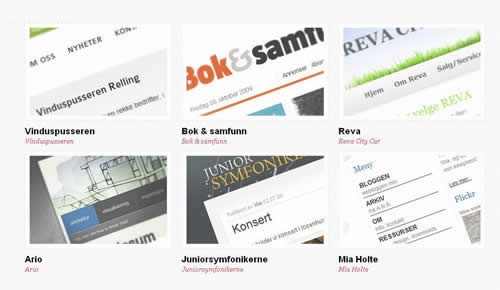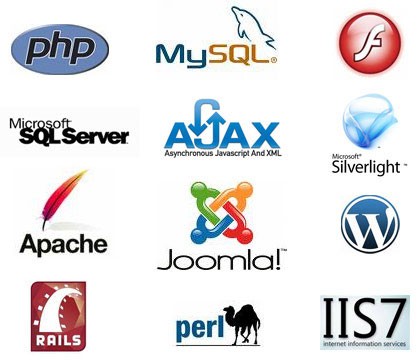In this post we explore 6 resources that could help get going on this whole Mobile Web thing quickly. Many of thee choices here aim at helping code right for the mobile space:
Monday, October 31, 2011
Sunday, October 30, 2011
14 Online Resources to Help Start a Small Business
If you are a discouraged job hunter or someone who has always wanted to be an entrepreneur, you will be pleased to know that the Internet offers an array of resources to help you find the right path to being your own boss.
Following are 14 online resources that offer assistance to budding entrepreneurs and small business owners. All of the resources are free, unless otherwise noted.
New York State
Many government agencies operate assistance programs for start-ups. For example, New York State has a website that provides general start-up advice coupled with specific information about operating a business in New York State, along with a listing of local resources.
--
Canada Business Network
The Canadian government operates a we...
Wednesday, October 26, 2011
What Your Website Says About Your Business?
 Providing consultancy to my clients is a part of my job, for the last few months I have come across with many clients who have the same business problem about how to make their digital presence better. There’s one common misconception I found in most of them that having a website is enough for taking business in digital media and it will be creating leads for them itself form internet.
Providing consultancy to my clients is a part of my job, for the last few months I have come across with many clients who have the same business problem about how to make their digital presence better. There’s one common misconception I found in most of them that having a website is enough for taking business in digital media and it will be creating leads for them itself form internet.
One important thing many of the businesses overlook is that while creating a website it’s more important to add value to the design and content of your website and make it user friendly rather than adding unnecessary creativity and lots of images into it. Usually my suggestion to my clients is to evaluate their website by themselves, this will make them to find out why their target audience is unable to reach the message they are trying to deliver through their website.
Let me share how can you evaluate your website effectiveness, ask your friend who is not aware of your website to access a particular section or details in your website, once he is done ask his experience about this activity, how much time he took to find that, what problems he faced, were there too many clicks, did he find any unnecessary content or images. Practice this test with few friends and then summarize their feedbacks, this result will help you to understand how a random user or your customer experience while exploring your website.
Today successful businesses are actively focusing to maintain their website and update it with the latest trends to keep their customers’ experience easy and trouble-free. A good website reflects your company image and creates a perception in the user’s mind through the content and images he finds on the website. About latest website layout trends and their effectiveness will try to cover in the next blog.
Just remember that you should be the first and the best critic of your website, evaluate your website timely to find out when it’s a time to update.
Tuesday, October 25, 2011
The 3 Best-ever Windows Productivity Tips
I've supplemented these with my personal picks and for good measure, I've asked our readers to tell us what's their all-time favorite Windows productivity tip. Now this WILL be interesting.
http://www.techsupportalert.com/content/three-windows-tips-our-readers-best.htm
How to Build a Sliding One Page Portfolio with jQuery
This tutorial will show you how to create an interesting jQuery-powered one-page site. One page sites are usually a great way to show your prospective clients how good you are at what you do. This one is no exception.
10 Things You Should Know About Being A Web Designer
Web design is not the most noble job in the world. We don’t save lives or build houses for the poor kids of Africa. We create visual experiences on the internet. Our job has its own ups and downs and rules that not everybody agrees with and there are obviously things you should know about this career if you plan on getting serious about it. You can find here a list of things you might want to know about being a web designer that will help on easing you in the business.
Clients are hard to deal with
Well, not all of them, but the majority of them will create a lot of stress for you and you won’t be happy to hear from them again soon. They put the money in your pocket, so you always have to try and bring their vision to life. There is a very funny illustration on the internet that talks about this topic better than I could ever; you can enjoy it here. Many times you will have to deal with this situation and might design a product you are not entirely happy with. But because the client pays, you will have to finish it. Later on I will tell you why this should not be a problem.
But wait, there is more. Not signing a proper contract might cause you headaches, because the clients will try to make you work more for them for free. This is why you need to have a solid contract signed by both parties before you start working. Never skip this part. Never!
Not all clients are like that, some of them will even pay everything beforehand and then hand you some more bucks for small adjustments, but that’s quite rare. This only happens with clients who don’t know how the internet works and thinks that a web designer is quite hard to find. Therefore be aware of the “big sharks” of the internet, who’ve done this kind of job hundreds of times before and know how easily a designer can be manipulated, because he needs a specific amount of money at the end of the month – we all do; in the end, nobody works just for fun.
Get out there and make a name for yourself
It is very lame when web designers go to interviews with an empty portfolio. Nothing shows more disinterest and laziness than the empty portfolio of a so-called web designer. Don’t expect to be hired and to create a portfolio for yourself afterwards, because nobody will hire you in the first place. Don’t forget you compete with people who polished their skills by working hundreds of hours for clients and who have a portfolio full of good work and promising testimonials. What do you have besides the “I want to provide high-quality services to this company” cliché?
Sure, it might take a lot of work for free, but this will bring you something that no payment can: experience. Once you have that experience, you are ready for a bigger job, but until then you have to go out and find some work. You can find churches, groups, hobby clubs and so on; all these would be happy to extend their presence on the internet and you are right there to offer it – for a low price or even for free. That’s how everybody starts, nobody hires web designers without a portfolio. It is entirely your responsibility to create a name and a brand for yourself and you shouldn’t expect to get the big bucks until you do it.
Have a clear target
One of the things you need to do at an interview for a freelance job is to define the product you will deliver. Today everybody can do some design and why would a boss hire you when his 15-year-old son can do the same for pocket money? You have to specify what exactly it is you can deliver, from SEO to social media integration and a content management system which you develop yourself. Many clients think a website has these features included anyway and won’t even consider paying more for them. This is why you have to specify from the beginning the nature of your project and the targets.
The client is not always right
Yes, you’ve heard me right. You were not hired to be liked by the boss. You were hired to provide a good, high-quality solution. If the client knows nothing about web design, how can he give you tips and advice, like in the illustration above? If you provide a great tool for his business, which generates profit, you are very likely to be hired back even if you didn’t listen to the client’s tips. There is no doubt about the fact that you are the expert and you should decide upon most of the project. Sure, hearing out ideas is not a bad thing and it’s recommended, but following the bad ones is stupid and will never help you create a strong name. If you do what the client wants and end up with a crappy website, you might have to avoid putting it in your portfolio. You don’t want people to know you’ve made it. But what are you interested in, having a high-quality portfolio, with work you are proud of, or earning money from different projects and, when a big opportunity arises, show up with an empty portfolio or with poor websites?
Remember once you’ve signed the contract (be aware of what it stipulates), you are the one who takes the most important decisions on a website, not the client. He hired you to do what you are good at; you’re the expert, not him. If he wanted someone he could order around, he has thousands of employees to do that with.
Design for the user
This is a big one. The design is the most important part of the user experience, although it’s very easy to find successful people on the internet who might argue with me. Craigslist is the best example: no design, no brand, huge success. But this is rare, don’t think that if Craigslist managed it, you will too. Design for the user and all the time think of how they interact with a website. It might be a good idea to ask the client what kind of clients he has. What kind of people are them, what do they do for a living, how much time they spend on the internet and so on. This is important to consider when designing for the user.
Once done, leave it like it is
Once you’ve finished the product, delivered it, earned the money and shook hands, it’s done. The product is not yours anymore. Take screenshots of it in its final form and then let it go. If the client wants to destroy it with low-resolution images, a poor logo or disproportionate font, it’s entirely his problem.
You should offer guidelines and help him in the beginning, but if he can’t keep the nice design you’ve made for more than a few weeks without messing it up, it is not your problem anymore. This means he needs a Web Master who can take care of his website on a full-time or part-time job for money. Or you can do it – for money too, obviously.
Don’t send desperate e-mails few months after the delivery saying that this does not look good and you should do this another way. It is simply not your problem anymore, so let it go already!
It never works from the first time
Web design is one of those jobs which eats the energy out of you and drives you crazy all the time with simple problems that have simple solutions. A selector does not work, you can’t make the hover color brighter for whatever reason, the database shows you an error each time you use it or the content does not update if you press the required button. All these problems have been and will be the ones which drive us all crazy. Don’t expect that once you start coding, it will be done within a matter of hours. It will not! It will take days, weeks or even months, depending on the size of the project, but expect having problems and be ready to go out for short walks many times.
“No” is an answer too
Many designers avoid saying “no” because they might upset the client; but, as said before, you are not hired to be liked by the client, but to show your worth and skills by developing a solution the client will be happy with on the medium and long-term period.
It is also OK to say “no” to a client who wants to hire you only because you have a solid portfolio and can be picky if you want to. This doesn’t mean you should reject all the projects that might, at some point in time, cause you stress and headaches, but try avoiding those clients that you know you don’t like working with. Declining clients and turning down offers is something every one of us does now and then, so don’t be afraid of saying no to projects you know you won’t fit in.
Be a master of something
You’ve probably heard before of Jacks of all trades, Master of none. You shouldn’t be one of them. It is OK to have skills in multiple fields, but be outstanding in one of them. You need something that makes you perfect for a job. “Web designer” is a very broad term, a web designer can do lots of things. What kind of web designer are you? Focusing on social media integration, nice and clean designs, fresh and clean code and so on. You need to be very good in something and market yourself accordingly. The fact that you can do more is OK, but don’t rely on it too much. Nobody will hire you for a complex project if you have basic knowledge in everything needed. You have to own more than that.
Tools don’t matter that much
This might seem a strange one, but just look in the past. Facebook is the new MySpace. Broadband internet connection is the new AOL. HTML5 is the most exciting technology right now. CSS3 is the new CSS1. Flash is on its way out. ASP.net will be out in maximum five years. Terms like WAP, FBML or Perl tend to become unimportant today, because nobody needs them anymore.
The average life span for a web technology is around five years – right now; who knows in the future? Do you think that in 10 years you will be able to impress your client with a strong HTML5 portfolio? Definitely no.
The answer to this problem is constant learning and improvement. Reading and learning about new technologies and then learning how and where to use them is the way to be successful. Maybe you are not an expert today, but you have the chance to transform into one in few years time, when the new technologies appear. While the current experts will be too busy with their projects, you will have time to learn the new technologies and go out there and market yourself as an expert. This is the way you will create a strong career for yourself.
Bottom line
Being a web designer requires many skills not everybody can have, and the more things you are capable of, the more chances you have to get a good job. The portfolio is the most important thing for a web designer, therefore put a lot of effort into it, even if you will have to do some volunteer jobs – it could pay off in the end. Market yourself as an expert in something, not a Jack of all trades, and then try to improve all the time. This is the key to success in every career, but in web design it is crucial if you plan on doing this on a long-term basis.
More to read
There are not many articles similar to this one on the internet, but I’ve tried my best to find some close ones:
30 Things You Have To Know About Being a Web Designer on 1stwebdesigner
The Funny Thing About Being a Web Designer on ClickNathan
5 Reasons Why I Love Being a Web Designer on My Ink Blog
10 Things You Can Do To Become a Better Web Designer on VanSeoDesign
The Roadmap To Becoming a Professional Freelance Web Designer on Smashing Magazine
Sunday, October 23, 2011
Top 10 Best Free Online Virus Scanners
Antivirus software – the most essential thing that you need to install when you are using Windows operating system. You need it the day you have installed Windows OS because it is highly prone to virus affection. Attack of virus acts like a infection just it is in human body. It spreads all over your computer, infecting it and harming in every way it can.
Virus can be spread in many ways, the most common are e-mail messages, IM messaging services, attachments through suspicious file and porn sites. But, we are lucky that we got several antivirus programs that allows you to detect and remove viruses from your computer.
But, there’s always been a possibility that you installed antivirus software is not able to find every threat so online virus scanner can be a good option. It will help you to know that your antivirus software is working properly or it’s time to jump on second option.
So, have a look on SaveDelete compilation of Top 10 best free online virus scanners of year 2010 to keep that your PC is free from viruses.
Don’t forget to  subscribe to our RSS-feed and
subscribe to our RSS-feed and  follow us on Twitter for recent updates.
follow us on Twitter for recent updates.
Best Free Online Virus Scanners
1. TrendMicro Housecall

2. ESET Online Scanner

3. Panda ActiveScan

4. BitDefender QuickScan
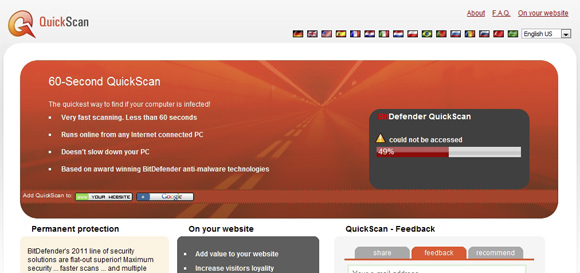
5. F-Secure Online Scanner
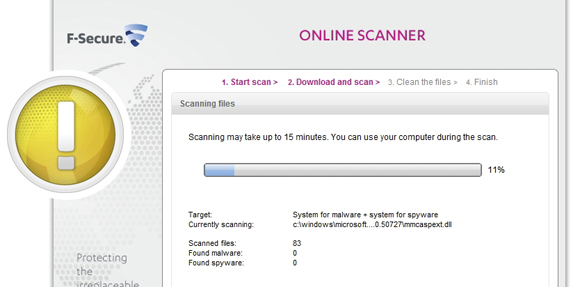
6. Kaspersky Online Scanner 7.0

Online Individual File Scanners
7. VirusTotal

8. Kaspersky File Scanner

9. Jotti
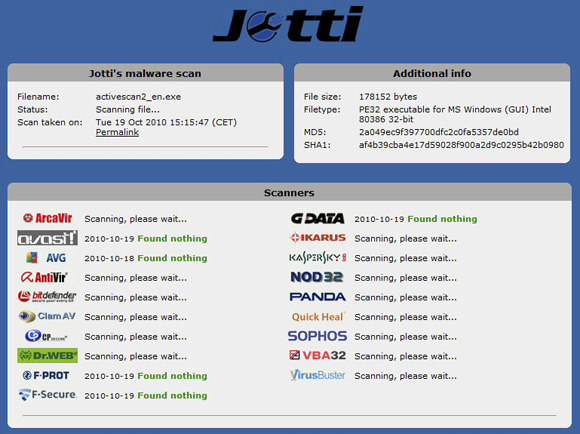
10. VirScan
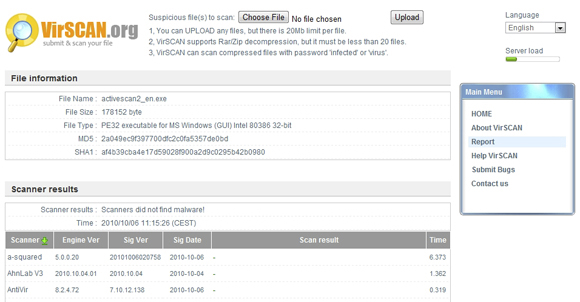
You may be interested in the following related articles as well
- 10 Awesome Multiplayer Games for iPhone
- 10 Amazing Screen Shots in Web Design
- Top 10 Best Free WordPress Themes of September 2011
- Top 10 Google Maps Mash-up
- Top 10 Online Tools For Converting Documents
Don’t forget to  subscribe to our RSS-feed and
subscribe to our RSS-feed and  follow us on Twitter for recent updates.
follow us on Twitter for recent updates.
Saturday, October 15, 2011
10 things you must teach new Linux users
During TechRepublic’s Live Event, I said that I could hand a Linux machine to new users and give them the information necessary to make sure their transition to Linux was successful — and they wouldn’t be hounding me constantly on how X is done or asking, “What is Y?” I could tell by the faces of the audience members that some of them wanted to know how I could make such a bold statement. With that in mind, here are 10 pieces of information to pass on to new Linux users that will ensure a successful transition.
1: It’s just an operating system
Only two years ago, this issue wouldn’t even have been mentioned. The thing is, the vast majority of work now is done through a Web browser. This makes the operating system almost irrelevant. So long as the operating system can run a browser, it will most likely live in the background, working away without so much as being noticed. Of course, this should be the case anyway, as an operating system is nothing more than a layer between user applications and hardware.2: It’s not Windows
Many new users aren’t exactly aware that there is a difference between Windows, Linux, and Mac. But they need to know that they shouldn’t always expect Windows-like behavior. When a user expects an operating system to behave like another operating system, trouble will most certainly ensue. Does this mean you need to give them the rundown on every difference between the operating systems? No. They just need to be prepared to encounter different behaviors from what they expect.3: There is no “C”
Windows users are accustomed to a file system structure that never really made sense. Linux, on the other hand, has a perfectly logical directory hierarchy. This is one issue users will need to understand. However, there really is only one main directory they need to know about: /home/USERNAME (Where USERNAME is their name). Most modern distributions create the following directories within the users home directory: Documents, Pictures, Music, Video. Those subdirectories speak for themselves, and new users only need know where they are located to function properly. They also need to know that their home directory is the only place on the file system where they can save files.4: Installing software is a different process
This one can trip up the new user more than anything. PC users are accustomed to searching for software on the ‘net, downloading the .exe file, double-clicking it, and waiting for the software installation to complete. So they need to understand that Linux distributions come complete with their own special tool that will do all of that for them. All they have to do is open the Add/Remove Software tool (such as the Ubuntu Software Center, PackageKit, or Synaptic), search for a piece of software, and install it. New users tend to love the sheer amount of software that’s available to install. Naturally some of it is useless, but the majority of those titles are good pieces of software that serve their purpose.5: The command line is not necessary
When new uses are handed a Linux box, one of the first things to come out of their mouths is often, “Am I going to have to learn a bunch of commands?” The answer is no. In fact, modern Linux distributions are created in such a way that users could live their entire Linux lives and never touch the command line. This is now a non-issue. The command line is there (and always will be), but only those who want to use it need ever open up a terminal window. Outside of that, users can rest assured that they will not have to grep, ls, mkdir, chmod, or chown. Nearly every action in Linux can be handled through a GUI.6: There’s no need to worry about infection
We’re no longer dealing with Windows — so all that concern for viruses and malware is a thing of the past. You don’t see AVG or SEP in the notification tray? That’s normal. Your machine will not be at risk without them. But it’s still important to make sure users know that their colleagues may still be using Windows, so they shouldn’t be cavalier about forwarding email attachments to them. Just because those attachment won’t harm the Linux box doesn’t mean they won’t harm the Windows box.7: It’s free
I’m always shocked at how much trouble users have understanding the concept of open source and the fact that most open source software has no cost attached. “Well then it must not be any good!,” is most often the reaction. Not so. Of course, a consumerist society would have trouble with the idea that “free can be good,” but it’s one we should get used to. In many cases, open source software is not only better for society, it’s better for your computer.8: If you don’t like it, you can change it
This is another strange concept for new users, but one they should understand. Unlike Windows and Mac, if you don’t like a Linux desktop, you can change it. Granted, this isn’t something a new user is going to just automatically do. But knowing that it is a possibility helps new users understand just how much flexibility they have. Besides, working with a desktop you don’t like can make for a frustrating experience. I prefer to demonstrate for new users the types of desktops available for them and let them choose. Most times, they will go with what they’re somewhat familiar with (KDE being a good choice for most), but on occasion a new user will go with something completely different just for the experience.9: Not all hardware is created equal
That’s right — not every piece of shiny new hardware will actually function properly with the Linux operating system. This is not nearly the issue it once was, but for some pieces of hardware (such as multi-function printers, some wireless cards, and laptop displays,) the problems still persist. For those pieces of hardware, it is sometimes as simple as downloading proprietary drivers (something new users won’t mind, but you will want to take care of). Other times, it may be as involved as switching to a different distribution all together. The good news is that Linux has come a long, long way in this area and continues to expand and improve.10: Google is your friend
The single most important thing you can do for yourself and your new users is to ensure that they understand just how helpful Google can be. When there is a problem or an aspect of Linux they don’t understand, they should know that someone else has probably documented this issue, and helpful info is just a search away. Show new users how to make the most out of a Google search so they are not inundated with worthless results. In the end, they might come to you with fewer request, and even more important — they’ll be learning along the way.Easing the transition
People fear change. And it’s become clear that the more things do change, the more people react. (Just watch Facebook long enough and you’ll see this in action.) But change doesn’t have to be avoided or handled improperly. With just a little preparation on your part, the new Linux user will have a positive experience and will most likely not look back.Thanks & regards,
"Remember Me When You Raise Your Hand For Dua"
Raheel Ahmed Khan
System Engineer
send2raheel@engineer.com
sirraheel@gmail.com
http://raheel-mydreamz.blogspot.com/
http://raheeldreamz.wordpress.com/
http://www.facebook.com/pages/My-Dreamz-Rebiuld-our-nation/176215539101271
http://www.facebook.com/pages/Beauty-of-islam/223983470988333?sk=wall
http://www.facebook.com/pages/Health-is-wealth/289486761065829?sk=wall
Tuesday, October 11, 2011
5 Powerful Text Editors for Windows
We have always tried to feature great software here at Lifehack.org. You know, the stuff to keep you guys and gals productive. You can say whatever you want to about Windows vs. Mac OS X. Maybe you like OS X for its “simplicity” or prefer Windows because you are a hardcore gamer. Either way, no one can deny that Windows has a huge 3rd party software base that users can tap into.
Even though I am a Mac owner, I work in Windows 7, 8 hours a day at the minimum. I have 3 versions of Windows installed virtually on my Mac and a separate machine for a real installation of Windows 7. Programming on Windows is my thing and is what I do “professionally” so I tamper with text day-in and day-out. It’s important to have an awesome text editor to work with.
Let’s take a look at 5 powerful text editors for Windows.
- The venerable Notepad++
 Notepad++ is an open source text editor that hosts a massive amount of features for everyday users as well as hackers. NP++ is written in C++ and for most text editing tasks it holds its own. There is text folding, excellent search features with regular expressions, support for syntax highlighting in every programming language you can think of, column editing, tabbed interface, conversions, and also a way for contributors to include plugins.If you are looking for a free (as in free beer) way of editing code and text, there may be no better than NP++ for Windows.
Notepad++ is an open source text editor that hosts a massive amount of features for everyday users as well as hackers. NP++ is written in C++ and for most text editing tasks it holds its own. There is text folding, excellent search features with regular expressions, support for syntax highlighting in every programming language you can think of, column editing, tabbed interface, conversions, and also a way for contributors to include plugins.If you are looking for a free (as in free beer) way of editing code and text, there may be no better than NP++ for Windows. - TextPad
 TextPad is a paid application for editing forms of text. It isn’t as robust in the coding realm as NP++, but it is excellent for writing or plain text editing. TextPad supports a tabbed interface, search capabilities, macros for completing common tasks, document selection sidebar interface, spell checking, etc.It’s a simple, small-footprint editor and priced at $27 with a free trial.
TextPad is a paid application for editing forms of text. It isn’t as robust in the coding realm as NP++, but it is excellent for writing or plain text editing. TextPad supports a tabbed interface, search capabilities, macros for completing common tasks, document selection sidebar interface, spell checking, etc.It’s a simple, small-footprint editor and priced at $27 with a free trial. - E Text Editor
 With a tagline like “The Power of Textmate on Windows” it isn’t hard to guess what the E Text Editor is shooting for. Basically, E is a Textmate clone for Windows. Textmate is a super popular text editing and code handling app on Mac OS X that is beloved by many a coder.E supports Textmate snippets, bundles, version control, supports syntax highlighting for a ton of languages, has great search features, and can be used as a Unix scripting environment inside of Windows.There is a free trial while the full version is $46.95. Let’s hope that E doesn’t fall off the earth like its father app has.
With a tagline like “The Power of Textmate on Windows” it isn’t hard to guess what the E Text Editor is shooting for. Basically, E is a Textmate clone for Windows. Textmate is a super popular text editing and code handling app on Mac OS X that is beloved by many a coder.E supports Textmate snippets, bundles, version control, supports syntax highlighting for a ton of languages, has great search features, and can be used as a Unix scripting environment inside of Windows.There is a free trial while the full version is $46.95. Let’s hope that E doesn’t fall off the earth like its father app has. - EmEditor
 EmEditor is a powerful unicode text editor that does one thing really well; handles and opens extremely large text files. I’m talking about files that are several gigabytes large. I’m not sure the magic behind this editor but it can open huge files and allow users to search them as they are still being opened.If you don’t have a need to open and look at large files, EmEditor is sort of ho-hum as it doesn’t give the user anything extra than Notepad++ does. But, if you need your text editor to stop crashing when you are opening 100MB+ text files, then EmEditor is what you are looking for.There is a free trial and the full license costs $39.99.
EmEditor is a powerful unicode text editor that does one thing really well; handles and opens extremely large text files. I’m talking about files that are several gigabytes large. I’m not sure the magic behind this editor but it can open huge files and allow users to search them as they are still being opened.If you don’t have a need to open and look at large files, EmEditor is sort of ho-hum as it doesn’t give the user anything extra than Notepad++ does. But, if you need your text editor to stop crashing when you are opening 100MB+ text files, then EmEditor is what you are looking for.There is a free trial and the full license costs $39.99. - UltraEdit
 In my experience, UltraEdit is one of the most, if not the most, powerful text editing programs on Windows or Mac. It was introduced to my while working my current gig and I have to say it’s pretty insane what the thing can do.It has a multi-row tabbed interface, script browser, macros, XML manager (to help you navigate XML files), give you a function list when working with source code, code syntax highlighting and more. The one thing that may get to you is that the UI is rather cluttered; but that can be remedied.It’s hard to believe the UltraEdit only costs $59.95 for either Windows or Mac because of all the features that it offers its users.
In my experience, UltraEdit is one of the most, if not the most, powerful text editing programs on Windows or Mac. It was introduced to my while working my current gig and I have to say it’s pretty insane what the thing can do.It has a multi-row tabbed interface, script browser, macros, XML manager (to help you navigate XML files), give you a function list when working with source code, code syntax highlighting and more. The one thing that may get to you is that the UI is rather cluttered; but that can be remedied.It’s hard to believe the UltraEdit only costs $59.95 for either Windows or Mac because of all the features that it offers its users.
So, if you want to get some real work done on a Windows machine, these are the tools that you need to do it. If you want to get a lot of editing done for no price at all, I can’t suggest NotePad++ enough. But, in my experience, if you want a “professional grade” app for editing, UltraEdit may be the way to go. Either way, you are going to be using one of the best text editing apps that Windows has to offer.
Yes, Google Drive Is Coming. For Real This Time.

About a month ago, some additions to the code in Chromium (the open source browser behind Chrome) suggested that the long-fabled “GDrive” may be on the verge of actually launching. A week later, user-facing proof started appearing. Then earlier today, sharp-eyed social media consultant, Johannes Wigand, spotted something interesting during a presentation at a Google-sponsored event: something that sure looks a lot like Google Drive.
And it is.
Over the past month, we’ve been able to dig up more information about Google Drive. First of all, it is very real. And it is being used internally at Google. Of course, it was also real back in 2007 and 2008 before it was eventually killed. But talking to employees back then who saw and used the service all agreed that it was pretty wonky and not ready for prime time. This new version is expected to be much better.
As you can see in Wigand’s picture (above, with important elements circled by me), Google Drive on the web will essentially be Google Docs rebranded. This shouldn’t be a big surprise since Google has been positioning Docs as a sort of Google Drive since early 2010. The difference is that Google specifically didn’t want to call it that at the time. Now they do.
And it makes a lot more sense. Few people are using Google Docs for online storage beyond the files they use in Docs. Most still probably don’t even realize they can. Something as simple as changing the name to Google Drive should help with that. There will also be a new “My Google Drive” area for various folders in Google Drive. There will be other Drive-specific tools as well.
But here’s the real key: there will also be native syncing software that you install on your various computers and mobile devices. Yes, like Dropbox.
This was also true back in the day with GDrive, but again, the service (codenamed: Platypus) was said to be very buggy. Now it is said to work well. If you have a document on your computer that you want to move to another one, you simply drag and drop it into this new Google Drive sync app. Or, of course, you can use the web.
We haven’t heard the timetable for the Google Drive roll-out, but we imagine it will be fairly soon. Again, Google is using this internally right now and has been for some time. One thing that Google may be waiting for is Ice Cream Sandwich, the new version of Android due next month. There may be some built-in Google Drive component to it (though that’s just me speculating). And it seems that it will be at least a part of Chrome, and more importantly, Chrome OS.
Expect Google Drive to reside at drive.google.com (not live yet). It’s not clear how docs.google.com (the current home of Docs) will be used — perhaps as the home of the word processor app or maybe it will just redirect. Also not clear is how Google will allocate storage for this service, but presumably it will be the same as they currently do for Docs/Gmail/etc. You get a certain (ever-increasing) amount for free, and if you need more, you can buy it.
Google provides search and advertising services, which together aim to organize and monetize the world’s information. In addition to its dominant search engine, it offers a plethora of online tools and platforms including: Gmail, Maps and YouTube. Most of its Web-based products are free, funded by Google’s highly integrated online advertising platforms AdWords and AdSense. Google promotes the idea that advertising should be highly targeted and relevant to users thus providing them with a rich source of information....
Learn more

